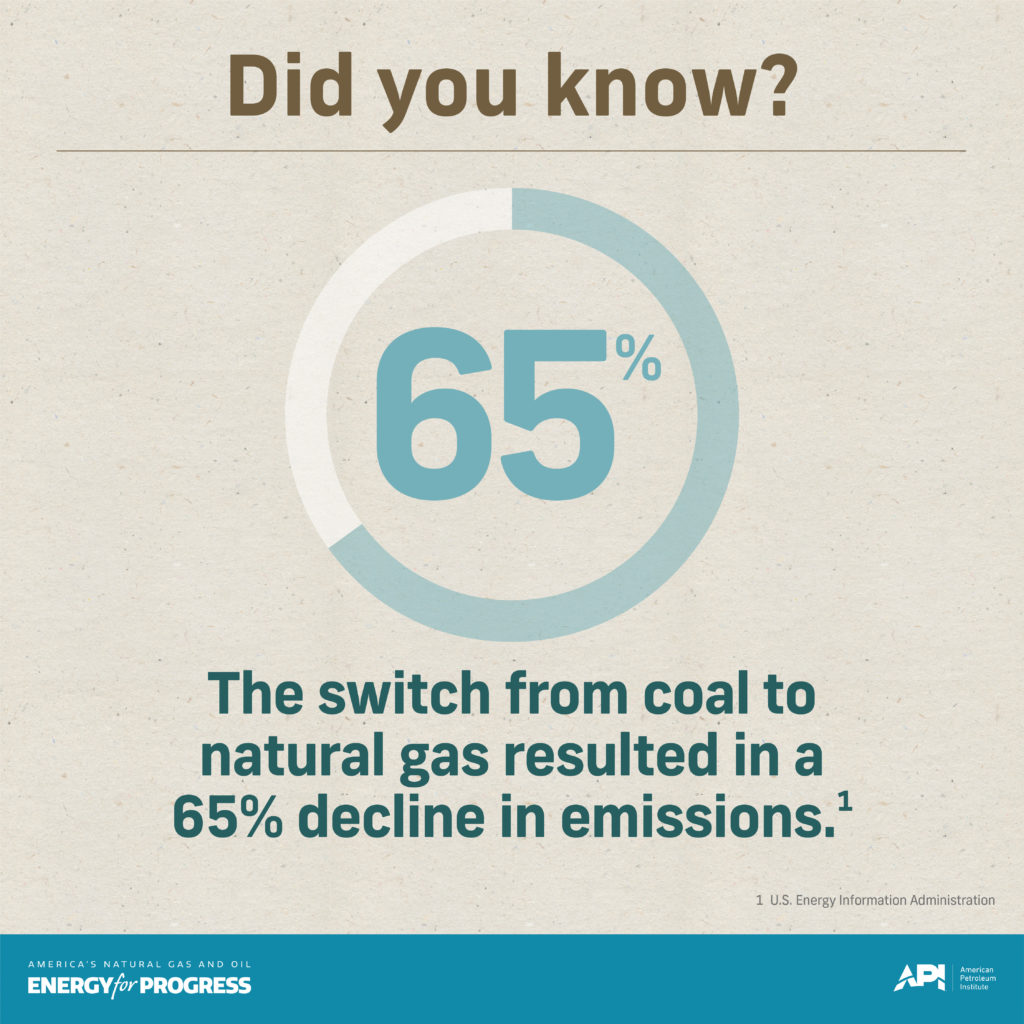Your Questions About Natural Gas, Answered
Natural gas is powering our modern way of life and helping to cut CO2 emissions. Here’s what this energy revolution is all about.
Learn MoreNatural gas is powering our modern way of life and helping to cut CO2 emissions. Here’s what this energy revolution is all about.
Learn More
October 12, 2022
Between now and 2050, according to the Energy Information Administration, the American demand for electricity will increase 1% each year. To meet that need — today and in the future — the U.S. relies on a mix of both natural gas and renewable energy. Even as wind and solar have become more common, natural gas remains a critical part of our energy mix because of its flexibility, reliability and chemical properties that make it cleaner than other fast-acting options.

Currently, only 12% of America’s electricity comes from solar and wind power. That means to meet increasing demand, the U.S. must look to other energy sources for the other 88% of the country’s needs.

In fact, a diversified energy sector led by natural gas, the leading fuel for generating electricity, is helping drive down greenhouse gas emissions while ensuring Americans have reliable power for their homes, digital devices and vehicles.
As energy demand continues to rise, America will need more energy from all sources – including natural gas and oil. They will supply half of the world’s energy in 2050, according to projections by the International Energy Agency, while renewables are expected to supply about 25% of global demand.

Natural Gas Power Provides a Foundation
It may surprise you to learn the presence of natural gas power plants have enabled increased investment in wind and solar energy projects. Here’s why: Solar and wind energy depend on natural occurrences outside our control. Wind and solar energy are also difficult to transport and store, meaning it must be used immediately where it is generated. Research into developing batteries capable of storing more renewable energy is ongoing, but the technology has a long way to go. As of 2020, U.S. battery storage capacity was only 1,650 megawatts, enough to power approximately 1,850 U.S. homes for one month. That’s a tiny fraction of the storage needed for a country the size of the United States.
Because of these limitations, we can’t rely on renewables alone. When the wind doesn’t blow or the sun doesn’t shine, natural gas is critical for grid systems to quickly respond to sudden and/or high demand for energy. Many natural gas plants can start supplying power to the grid in just one hour, to get us the energy we need in quickly and reliably.
This quick-start time means natural gas power generators are always ready to provide extra energy, playing a vital role during weather emergencies or other times when the grid is stressed. So, when other energy sources are unavailable to meet our needs, energy from fast-reacting natural gas plants can be increased upon demand.
A study from the National Bureau of Economic Research concluded that every one percentage point increase in fast-reacting fossil fuel facilities, such as natural gas plants, led to a 0.88 percentage point increase in the long-term share of renewables. That means, an increase in the availability of natural gas power plants can lead to an increase of renewable energy infrastructure at nearly the same rate.
Driving Down Greenhouse Gas Emissions
The pairing of natural gas and renewables in the coming years will help the U.S. to further reduce carbon dioxide emissions. In 2021, U.S. energy-related CO2 emissions were at some of their lowest levels since 1987, due in large part to power generators switching from coal to natural gas to produce electricity. When used to generate electricity, natural gas produces only half the CO2 emissions of coal.

The U.S. Energy Information Administration reported that 65% of the decline in CO2 emissions in the electric power sector between 2005-2019 was attributable to the switching from coal-fired to natural gas-fueled electricity generation. Globally, since 2010, the coal-to-gas transition has prevented 500 million tons of CO2 from being released into the atmosphere – the same amount of emissions produced by 63 million homes annually.
The European Union recently recognized the important role natural gas plays in reducing greenhouse gas emissions when it voted to label some natural gas projects “green.” The vote makes projects eligible for inexpensive loans and subsidies and establishes natural gas as a key part of the transition to lower-carbon fuels.
By partnering natural gas with renewable power, America can continue to build on this progress and produce the energy the world needs while reducing greenhouse gas emissions.
What is the single biggest reason for the reduction of carbon dioxide emissions in the United States?
Correct! The U.S. Energy Information Administration reported that from 2005-2019, 65% of the decline in CO2 emissions in the electric power sector was attributable to switching from coal-fired to natural gas-fired electricity generation. Learn more about the power of natural gas.
Good try! The U.S. Energy Information Administration reported that from 2005-2019, 65% of the decline in CO2 emissions in the electric power sector was attributable to the switching from coal-fired to natural gas-fired electricity generation. Learn more.
More From API
Read on for in-depth articles about how we’re securing America’s energy future, our efforts to combat climate change, and more.
New innovations make it possible to produce more energy with fewer emissions Combatting emissions of methane, a potent greenhouse gas, […]
Learn MoreWe’re taking five key steps to reduce greenhouse gas emissions
Learn MoreWhen you fill up your tank with gasoline or switch on a light at your home, you’re likely benefiting from […]
Learn MoreWe use cookies to offer you a better browsing experience, analyze site traffic, personalize content, and serve targeted advertisements. If you continue to use this site, you consent to the use of cookies. Read more about our Privacy Policy and Terms and Conditions.
accept